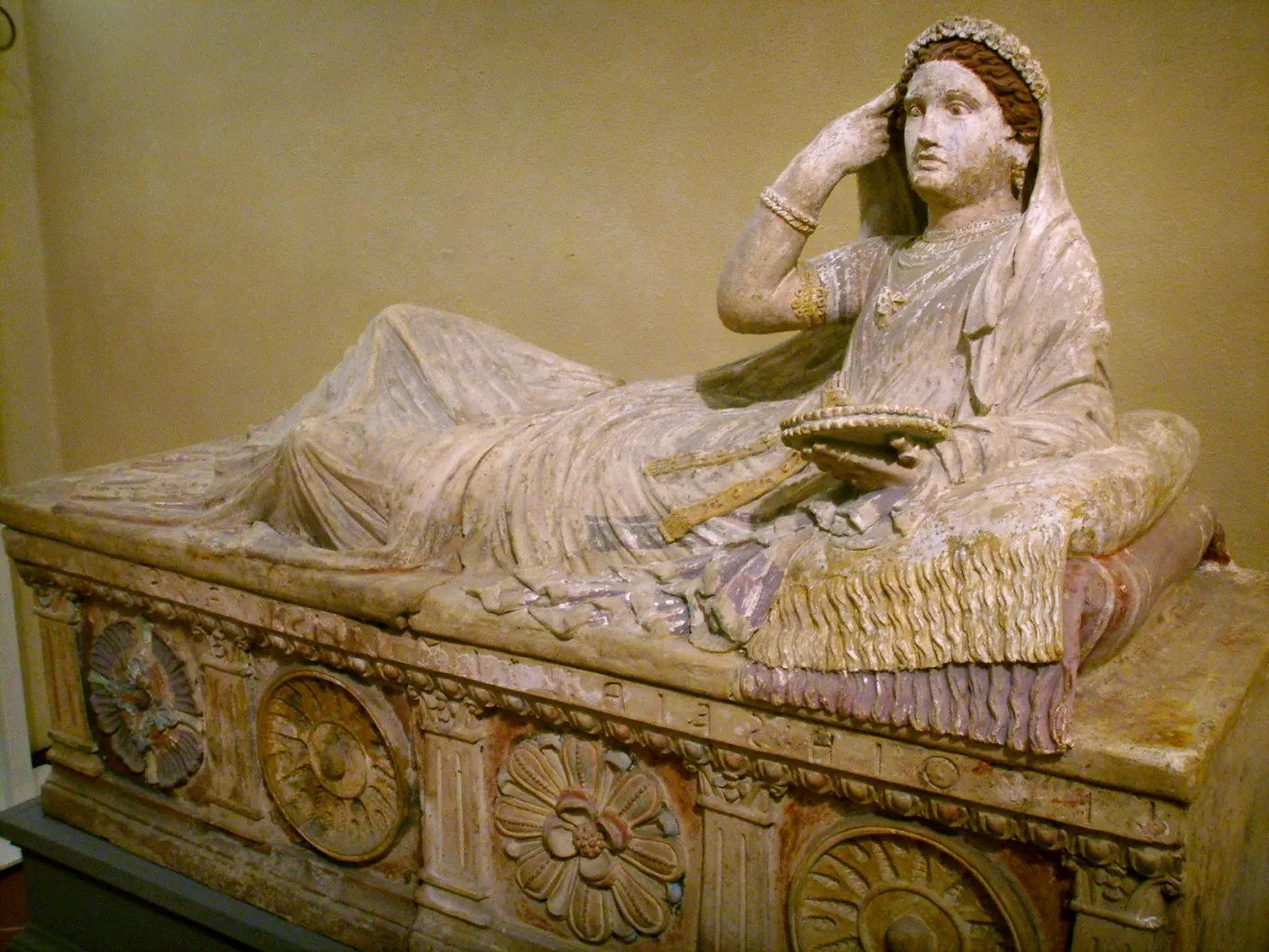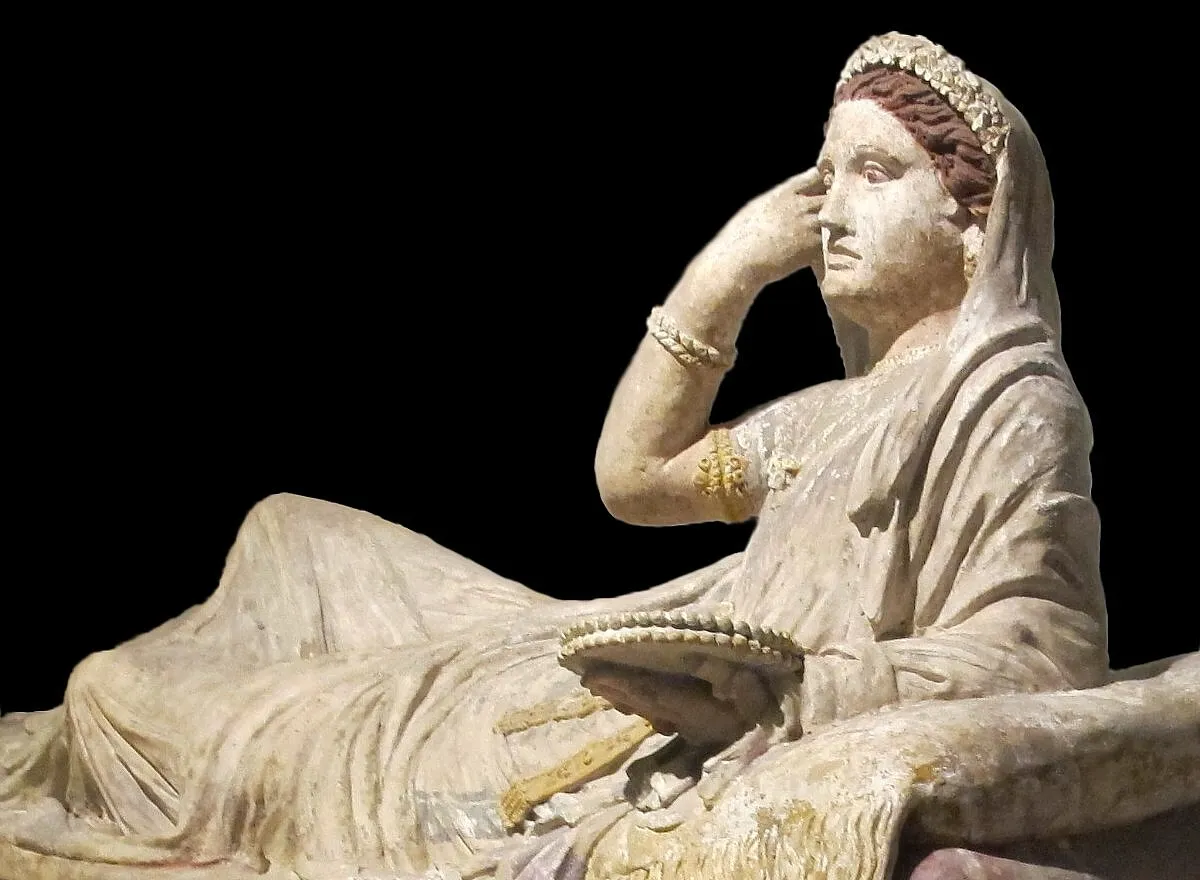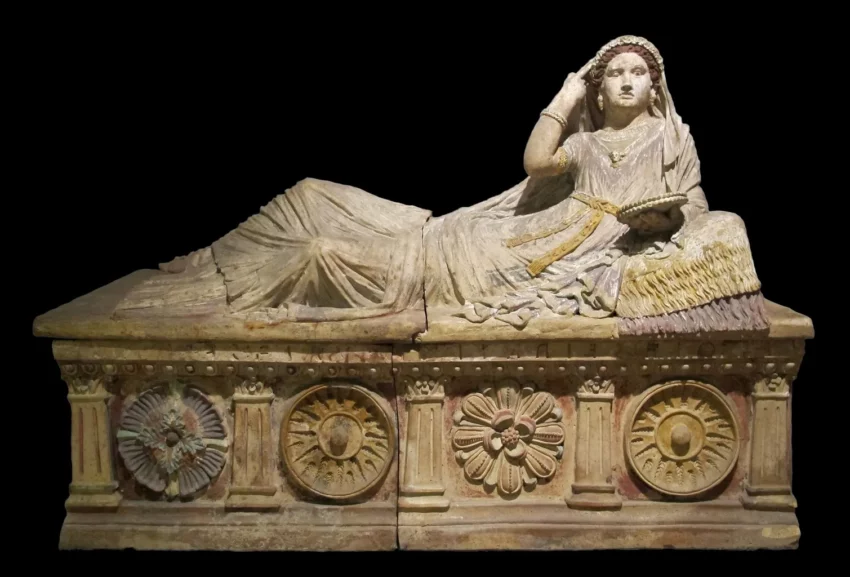The Larthia Seianti sarcophagus is a renowned artifact from ancient Etruria, a region in central Italy. It is a stone sarcophagus that dates back to the 2nd century BC. The sarcophagus is famous for its beautifully sculpted figure of a woman, Larthia Seianti, who is believed to have been a noblewoman from Chiusi. The sarcophagus was discovered in the 19th century and has since been a subject of interest for historians and archaeologists. It provides valuable insights into Etruscan art, society, and burial practices.
Get your dose of History via Email
The Larthia Seianti Sarcophagus: A Testament to Etruscan Artistry and Aristocracy
The Etruscan civilization, flourishing in ancient Italy before the rise of Rome, has left behind remarkable artifacts that offer a glimpse into their sophisticated culture and social structure. Among these, the sarcophagi of Larthia Seianti stand out as extraordinary examples of Etruscan artistry and the high status of Etruscan women. This post delves into the significance of the Larthia Seianti sarcophagus, exploring its craftsmanship, symbolism, and what it reveals about Etruscan society.
Craftsmanship and Symbolism
The sarcophagus of Larthia Seianti, housed in the National Archaeological Museum in Florence, is one of only two highly elaborate terracotta sarcophagi known from Etruria. Unlike the more rudimentary figures found on other Etruscan sarcophagi, the representation of Larthia Seianti is remarkably detailed, with intricate decoration and evidence of polychromy. The use of rare pigments, such as Egyptian blue, underscores the wealth and high status of the Seianti family. The sarcophagus was constructed in five parts, indicating a sophisticated understanding of terracotta craftsmanship. This complexity, combined with the original stark white slip and vibrant colors, would have made the sarcophagus a striking presence in its subterranean tomb.
The tomb itself, accessible via a narrow dromos, was designed for the impact of sudden illumination by torchlight, highlighting the importance of ancestor worship in Etruscan culture. The preservation of Seianti’s skeleton within the sarcophagus further emphasizes the care taken in Etruscan burial practices.

Status and Freedom of Etruscan Women
The sarcophagus and burial goods of Larthia Seianti provide insight into the status and freedom enjoyed by Etruscan women, which was notable in antiquity. The modest collection of silverware associated with Seianti, including items for toiletry, contrasts with the more utilitarian tomb goods of her relative, Larthia. This difference raises questions about burial customs and the personal preferences of the deceased. Despite the frugality of Seianti’s burial goods, the craftsmanship of her sarcophagus and the presence of luxury items in her tomb signal her wealth and high social standing.

Etruscan women’s participation in athletics and their care for their bodies, as noted by the Greek historian Theopompus, are reflected in the burial goods, including strigils used for cleansing or possibly depilation. This evidence, along with the depiction of Seianti’s fashionable attire and jewelry, portrays her as a cosmopolitan figure attuned to Mediterranean fashion trends.
At a glance
- Country: Italy
- Civilization: Etruscan
- Age: 2nd century BC
Conclusion and Sources
The Larthia Seianti sarcophagus is a remarkable artifact that offers a window into the lives of the Etruscan elite, particularly the role and status of women in Etruscan society. The craftsmanship, symbolism, and burial customs associated with the sarcophagus highlight the Etruscans’ artistic achievements, social structures, and cultural practices. Despite the passage of centuries, the sarcophagus continues to fascinate and inform, providing a lasting testament to the sophistication of Etruscan civilization.
- UW Canvas Judith Swaddling


Albania lady say mate they all come from Illyrian pelasg